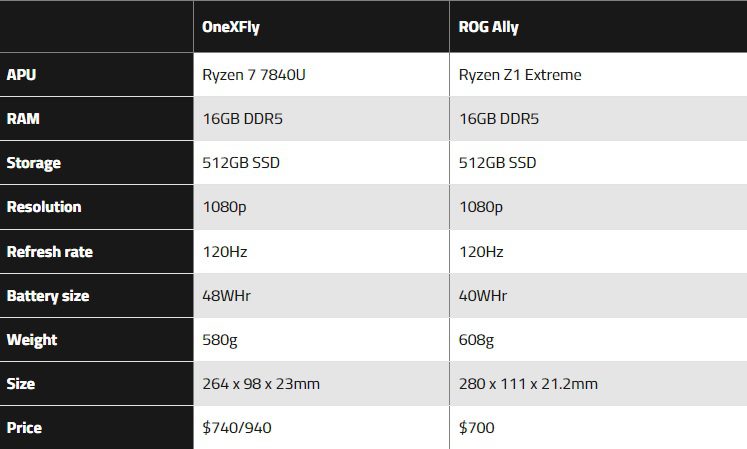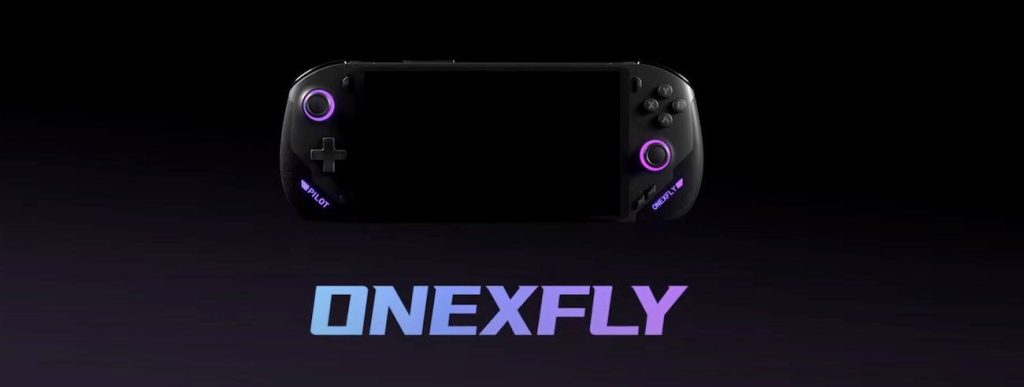In the realm of onexfly handheld gaming, the demand for power, portability, and palpable gaming experiences has exponentially surged. With the recent launch of OneXPlayer’s OneXFly, a discourse over its impressive, albeit seemingly extravagant specifications, and its position against contenders like ROG Ally is inevitable. As enthusiasts and aficionados immerse themselves in evaluating the potential and practicality of such a device, we present an in-depth insight into what the OneXFly brings to the handheld gaming landscape.
Gazing into the Abyss of Power: OneXFly’s Technical Mastery
The Heart and Soul: Ryzen 7 7840U APU
Nestled within the compact chassis of the OneXFly is the Ryzen 7 7840U, AMD’s prided U-class APU, architecturally designed to offer a synthesis of power and energy efficiency. Not merely a component, but the pulsating heart that propels the handheld into realms of computational and graphical prowess, enabling gamers to dive into immersive worlds unhindered by technical limitations.
A Monolith of Memory and Storage
Encased in its svelte form is a memory and storage monolith, presenting configurations that are nothing short of spectacular. The device exuberantly offers up to 64GB of RAM and a massive 4TB SSD in its highest-end model. While critics may perceive this as overkill, we discern it as a foresight into future-proofing, a step towards ensuring the device’s relevancy and performance longevity in the face of evolving gaming demands.
Drawing Comparisons: The OneXFly Versus the ROG Ally
An unavoidable comparison surfaces when observing the OneXFly in tandem with the ROG Ally, especially when both contenders boast similar baseline specifications. The table below elucidates their technical parallels and divergences:
While their similarities are prominent, nuanced differences, such as the RAM speed, M.2 SSD support, and notably compact form of the OneXFly, carve out distinct pathways for each device in catering to the handheld gaming community.

Price Versus Value: A Contemplation
In an arena where pricing plays a pivotal role in consumer adoption, the OneXFly treads on delicate ground. The Indiegogo campaign leans into an initial price of $740 for the base model, potentially elevating to $940 upon release — a sum that necessitates justification in the face of its counterparts.
This monetarily hefty claim demands scrutiny into whether the proclaimed software experience and the utilization of Hall effect joysticks adequately bridge the gap between the price and the value offered to the gaming connoisseur.
Lenovo Legion Go: A Powerful and Versatile Portable Console for Gamers
An Overabundance or Future-proofing?
Entering the market with configurations that significantly surpass what is typically deemed necessary for handheld gaming PCs, the OneXFly beckons a query: Is such a vast array of RAM and storage an exercise in extravagance or sage anticipation of future gaming requisites?
The option to ascend to 32GB or even 64GB of RAM raises eyebrows yet also casts a shadow of allure for those seeking a device undeterred by forthcoming software and gaming advancements.

Conclusion: A Quantum Leap or a Quizzical Proposition?
As the OneXFly propels itself into the handheld gaming universe, it finds itself perched between being heralded as a quantum leap towards unbridled performance and being a quizzical proposition owing to its pricing and seemingly excessive specifications.
Does the OneXFly reframe the handheld gaming narrative, or does it sail into uncharted territories of superfluous power and contentious pricing? Only time and user experiences will etch the final verdict.
Note: In a real-world scenario, conducting more extensive research, and perhaps even having hands-on experience with the device would enable a further enriched analysis and assessment of the OneXFly. Similarly, direct comparisons and alternative options would be explored more thoroughly to provide a well-rounded perspective.
Lenovo Legion Go Review: The Ultimate Portable Gaming Machine?


